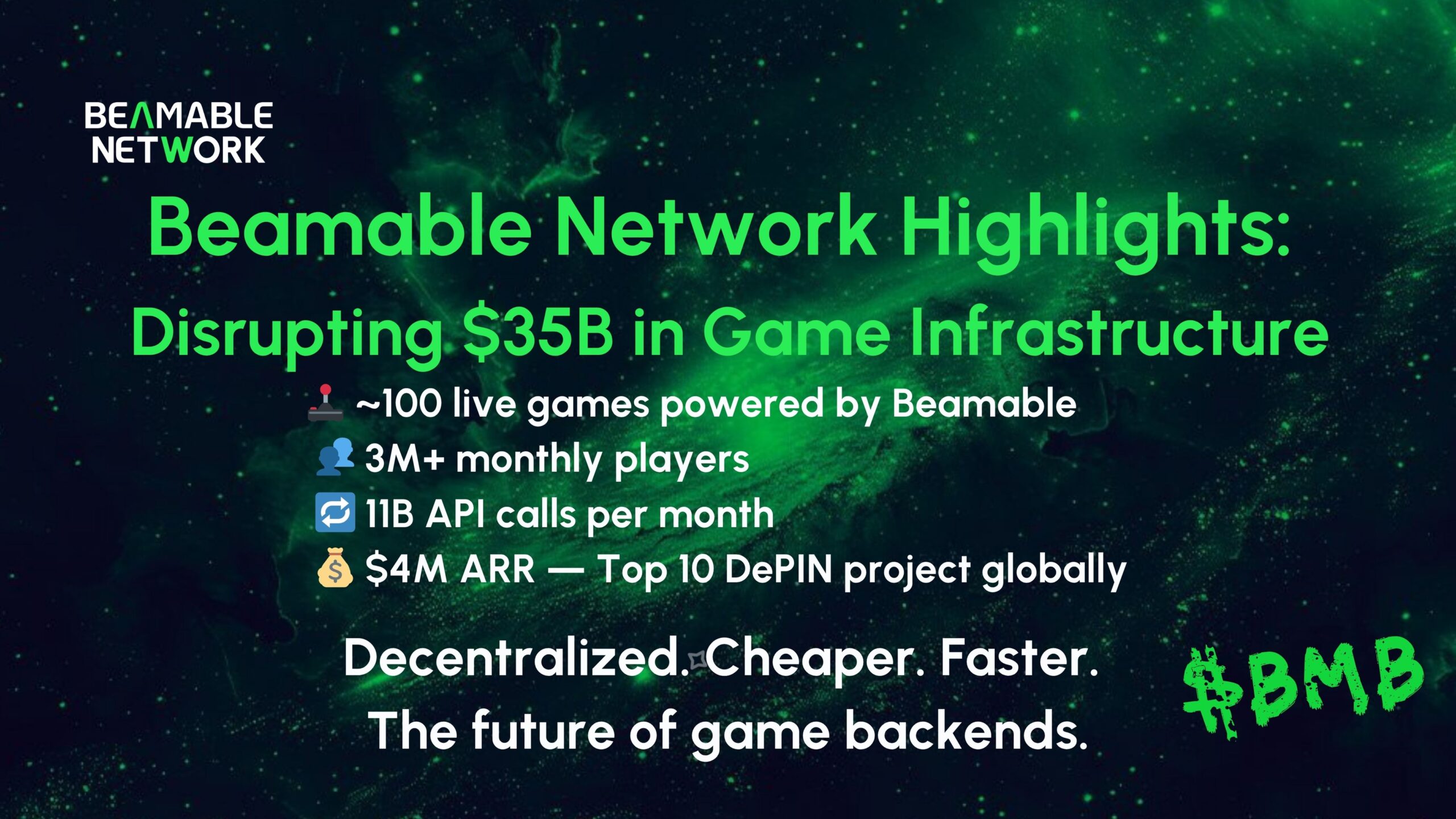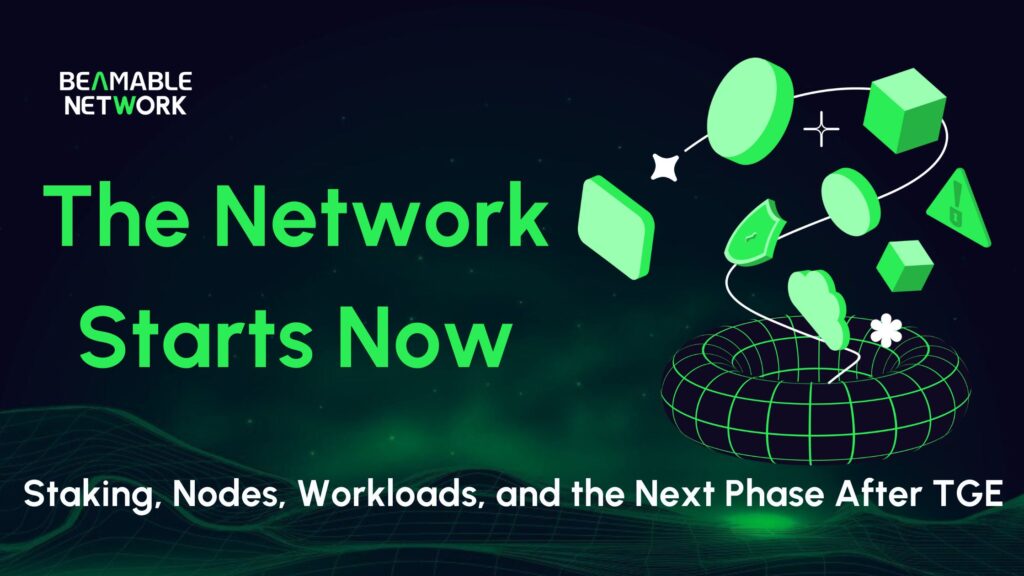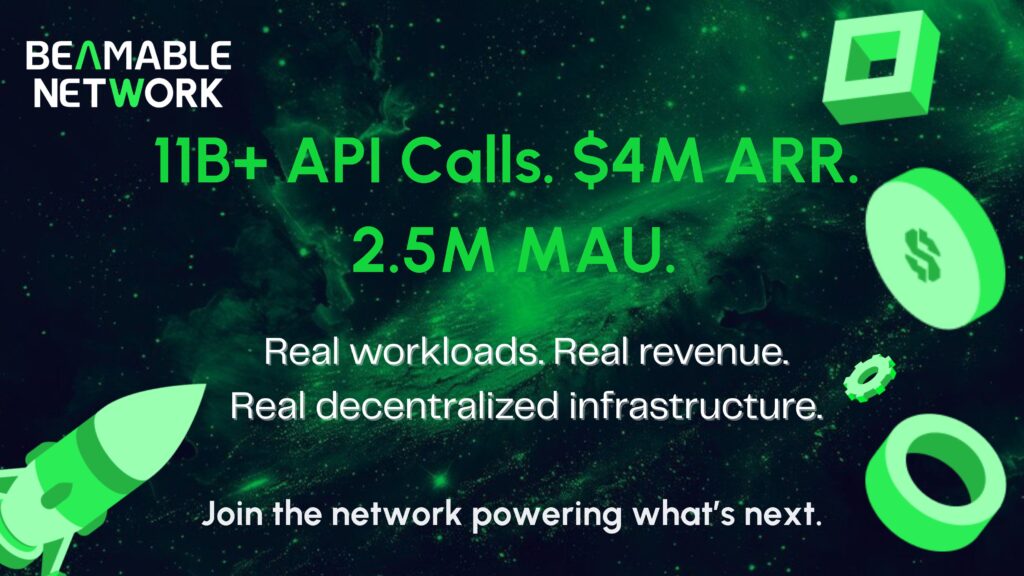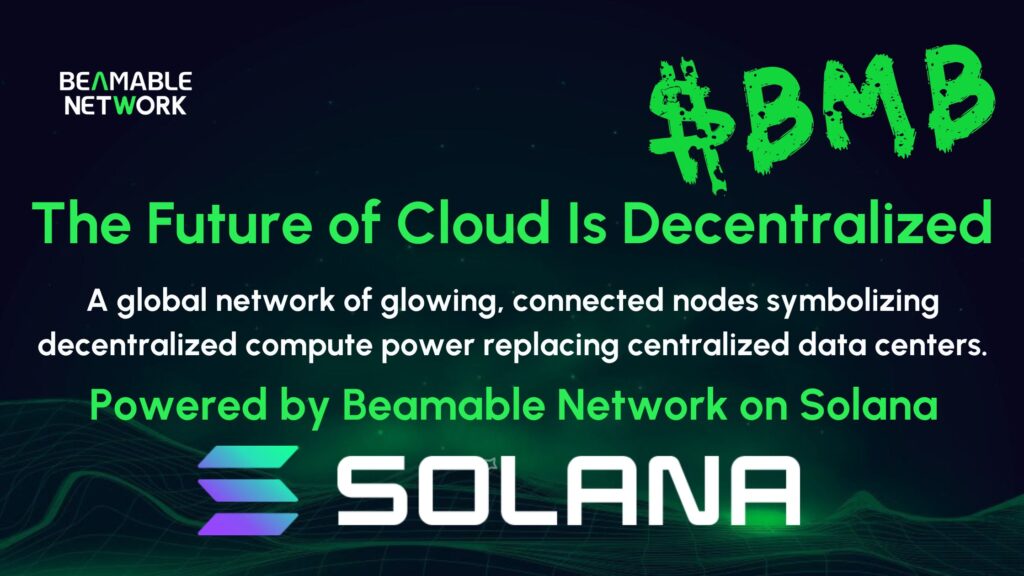By Jon Radoff
Why is decentralized game infrastructure gaining momentum? Because game studios are shifting almost entirely to live-service models, and the cost of backend services has ballooned into a $35B annual market dominated by centralized providers like Amazon, Azure, and Google. Beamable Network is solving this problem with a decentralized approach — cheaper, faster, and more reliable game backends.
Our highlights show why Beamable Network is one of the fastest-growing DePIN projects in the world.
Key Highlights
- 2M+ monthly active players already supported on Beamable-powered games.
- 95+ live games on the network today, with 150+ more in development.
- 10B+ monthly API calls driving usage across Web2 and Web3 titles.
- $4M annual recurring revenue (ARR) — placing Beamable in the top 10 DePIN projects globally.
Why the Market Needs Beamable Network
Game studios spend over $35B every year on backend infrastructure. Centralized providers force developers into expensive, inflexible systems. Beamable Network disrupts this spend by offering:
- Lower costs – Games only pay for the compute they use, with savings of 50–80% compared to hyperscalers.
- Faster development – A growing network of third-party developers builds reusable “microservices” that speed time-to-market.
- Reduced risk – Multiple decentralized compute suppliers eliminate single-provider dependency.
For more details on why infrastructure choice matters, see our post on Why Proof-of-Utility Matters for Game Infrastructure.
How the Protocol Creates Value
Beamable Network is designed so that growth benefits both developers and token holders:
- Usage-driven token buybacks – A portion of Network fees paid is intended to be used to buy $BMB on the open market, reducing supply.
- Staking rewards – Node operators and delegators earn rewards for securing the network.
- Ecosystem expansion – Features like Beamable Network Boost reward players and drive traffic to new games, creating more demand for infrastructure.
Want to understand the token mechanics in more depth? Check out this deep dive.
Why Live-Service Games Need DePIN
The gaming industry is shifting rapidly:
- 95% of studios are either running or planning a live-service title (based on Beamable Network analysis based on industry reports including Newzoo, Statista, and Game Developer Survey data)
- Live-service models extend player engagement and lifetime value with updates, DLC, and seasonal content.
Beamable Network gives these studios a scalable backend to:
- Deliver continuous content updates.
- Keep players engaged longer.
- Monetize throughout the entire game lifecycle.
For more context, see our article on Why Most Games Fail Before They Launch — and how infrastructure choices play a role.
Experienced Team Behind the Vision
Beamable Network is led by a veteran gaming team with decades of experience:
- Jon Radoff, CEO – 30 years building games and companies.
- Trapper Markelz, COO – 26 years in consumer software and gaming leadership.
- Ali El Rhermoul, CTO – 15+ years building platforms for 20M+ players.
This is the team’s second startup together, with a proven track record of execution.
TL;DR – Why This Matters
- Beamable Network is already powering 2M+ players and 95+ games.
- It disrupts a $35B market for game infrastructure with decentralized, cheaper, faster compute.
- The protocol is intended to be deflationary by design, rewarding developers, node operators, and token holders.
- With adoption growing, Beamable is positioned as the “Airbnb of game servers” for the next era of live-service games.



